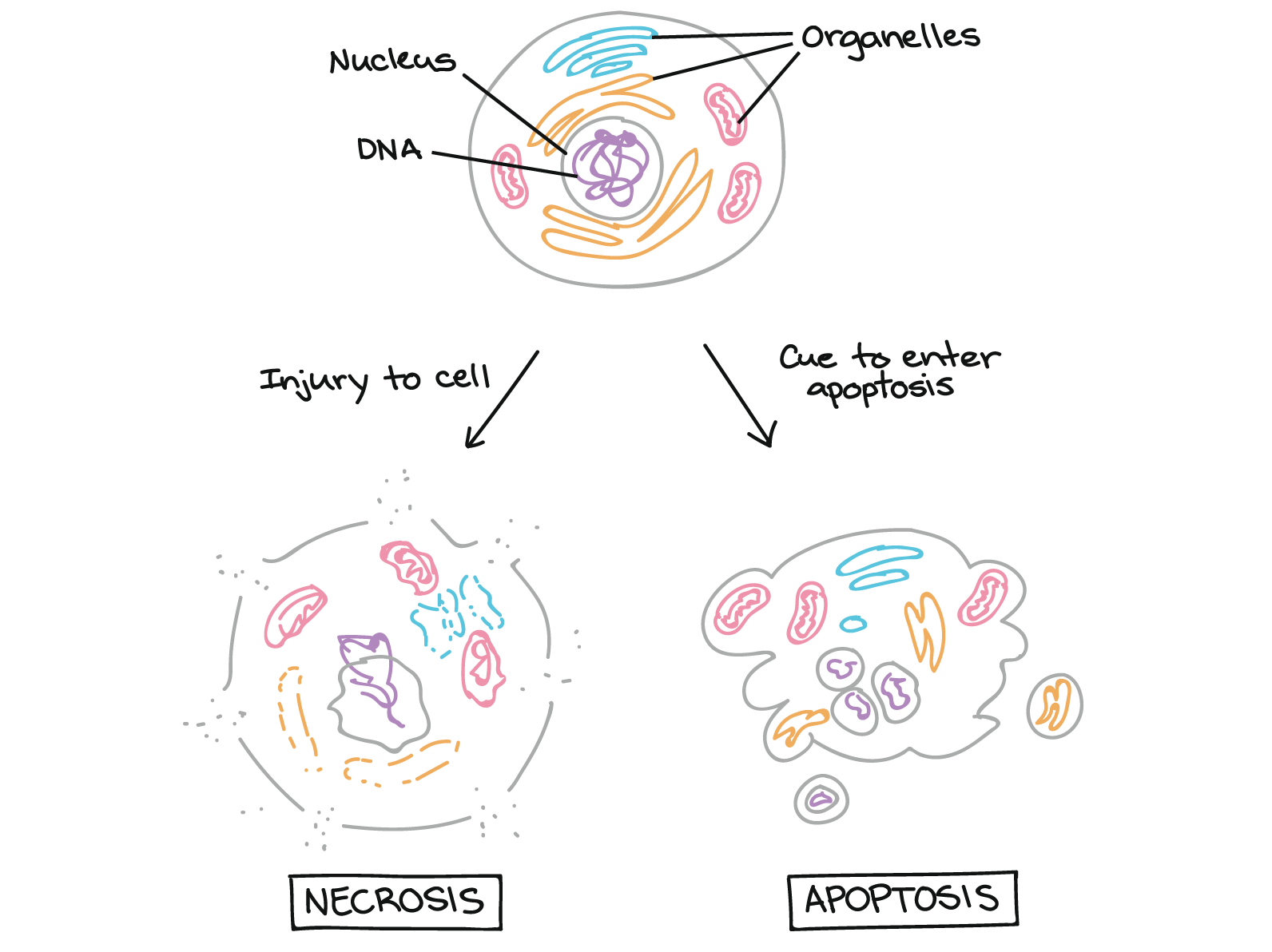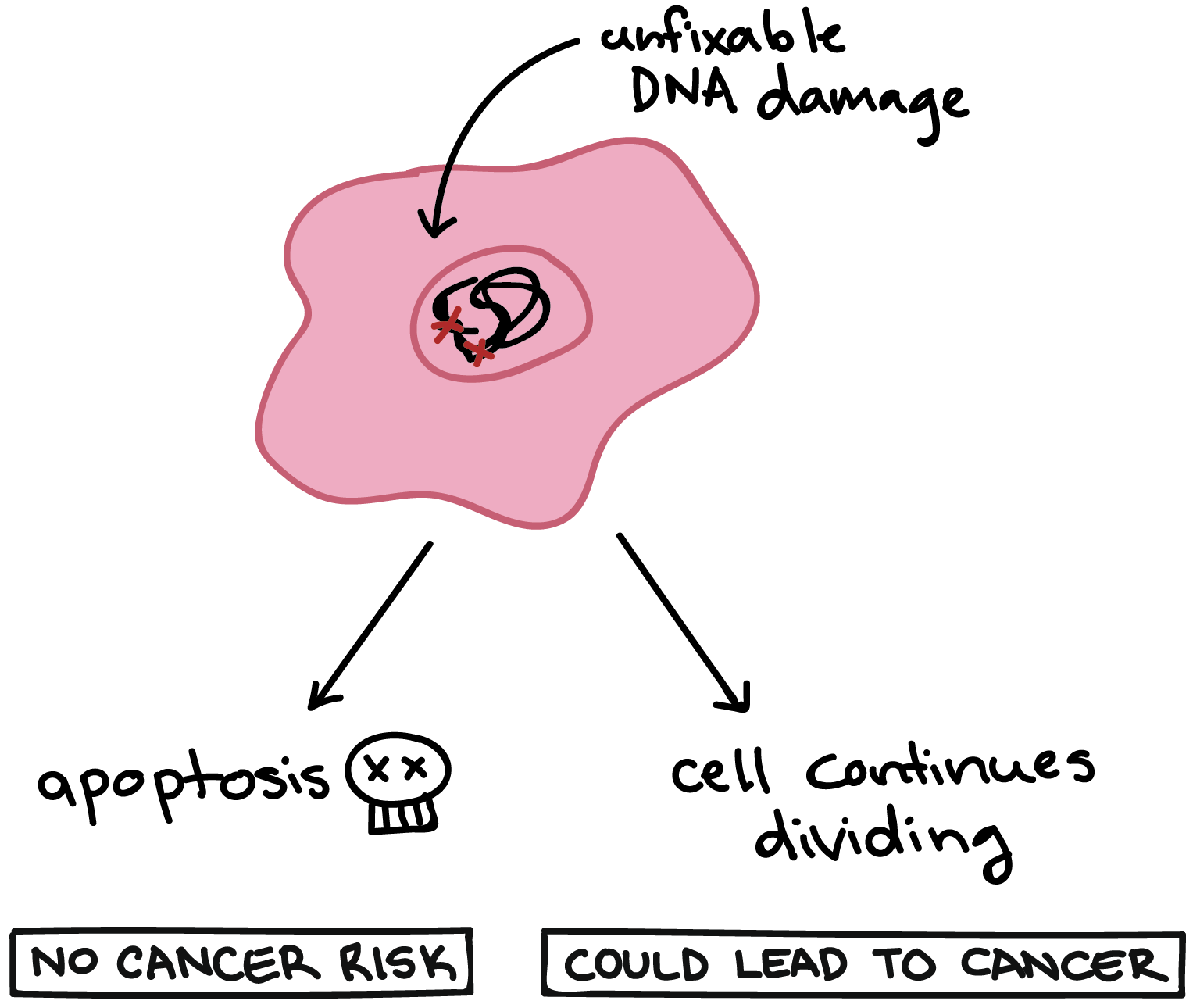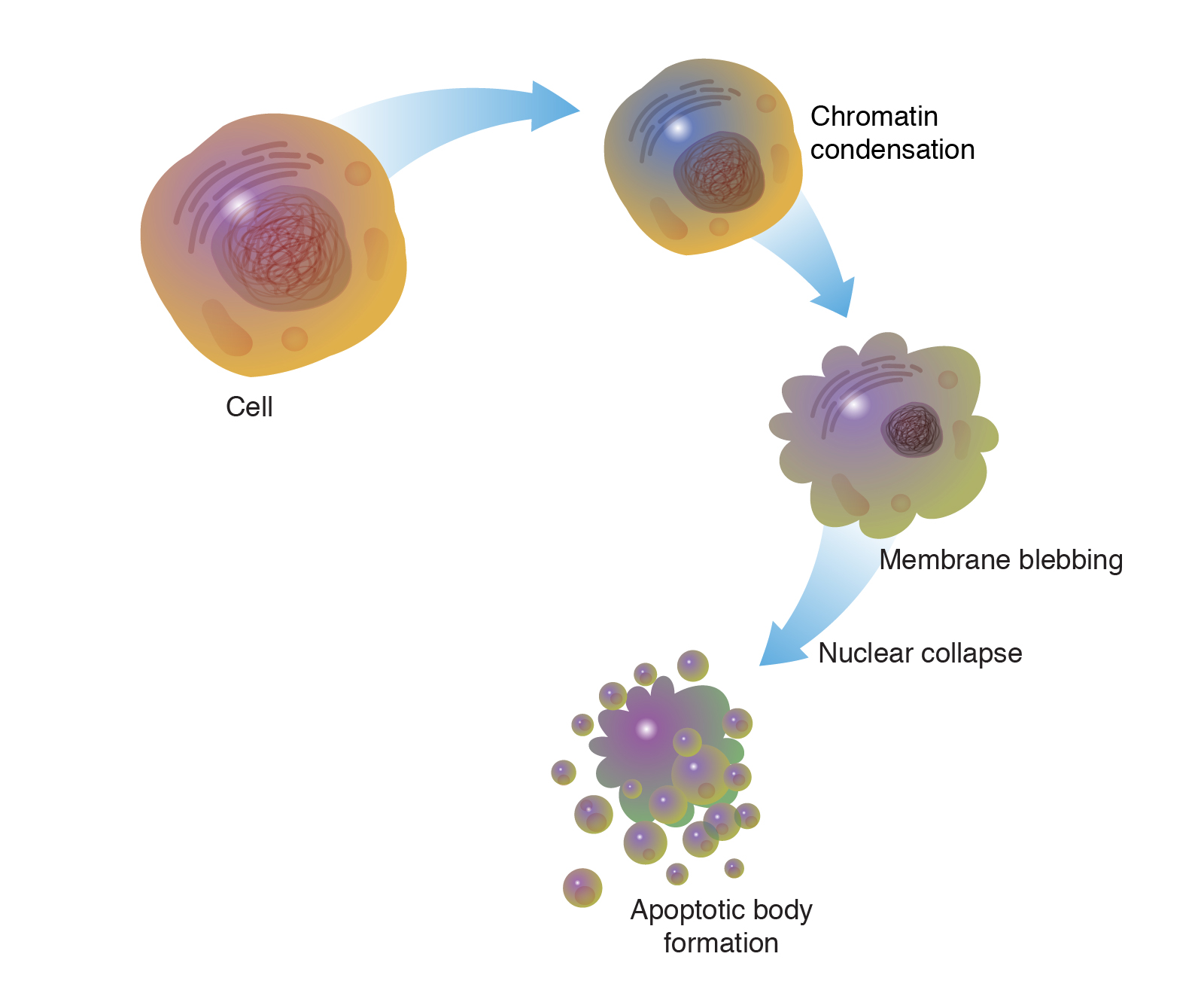Programmed Cell Death Theory of Aging
The term programmed cell death derived originally from developmental and embryonic observations and it emphasizes the idea that specific genes. The genetic theory emphasizes the importance of somatic and mitochondrial mutations and the concept of programmed aging.

Apoptosis Article Developmental Biology Khan Academy
It has been known for a long time that apoptosis is involved in.

. If a species did not have the genetic capacity for aging and death then it would not be forced to replicate to survive. This mechanism is related to programmed epigenetic aging. Programmed theory is the idea that aging is genetically programmed to occur with time and this process of deterioration eventually leads to death.
Mis-regulation of PCD is increasingly implicated in aging and aging-related disease. Here we look at the various processes by which cells age and die both programmed and unprogrammed. If this restraint is removed when a cell is challenged it will default to the self-destruct mode and assuming that the challenge is not so severe that the cell becomes necrotic it will undergo this physiological form of death.
PCD has evolved to achieve a delicate balance between cell survival and death in all. However the p21 cells can trigger apoptosis. RIPK1 RIPK3 and MLKL are the main molecules involved in necroptosis.
Programmed cell death PCD pathways including apoptosis and regulated necrosis are required for normal cell turnover and tissue homeostasis. We argue that the main difference between young and old multicellular organisms consists in the cellularity ie. Until recently programmed aging was considered theoretically impossible because of the mechanics of the evolution process and.
In number of functional cells in organs or tissues rather than in. However the problem with the theory is that it merely explains the purpose of aging but fails to provide the specific mechanisms that would explain in details the causes. Gene expression also controls body processes such as our body maintenance hormones homeostatic signaling etc and repair mechanisms.
Programmed cell death PCD pathways are implicated in aging and aging-related disease. Increased PCD during mammalian aging is implicated in tissue atrophy and neurodegenerative disease. In 1882 he published a theory of mammal aging to the effect that programmed death accomplished an evolutionary purpose and that therefore animals.
Necroptosis shares some of the morphological features. Immunological theory A programmed decline in the immune system leads to increased vulnerability to infectious disease aging and eventual death. Programmed death is a component of natural selection based on the premise of Weismann.
Programmed aging refers to the idea that senescence in humans and other organisms is purposely caused by evolved biological mechanisms to obtain an evolutionary advantage. This interpretation implies that aging is adaptive ie favored by natural selection in terms of supra-individual natural selection and programmed ie genetically determined and modulated. They manifest themselves through gene expression.
Fungal life span is limited by PCD pathways. Programmed theory also has specific sub-theories. This ensures that the cell cannot enter the next stage of cell division unless the DNA damage is repaired.
Programmed-cell-death sometimes called apoptosis is when cells that are no longer needed activate the cellular death program and effectively commit suicide. It is the donation of methyl group to the gene dna area like CpG-richpoor Islands loci in DNA the methyl group then can methylate the gene - this is turn can create gene silencing especially visible in children who have higher gene silencing because of higher methylationmore methylated methylomehigher. The physiological theories focus on a particular mechanism of aging for example the role of reactive oxygen species in damaging various components of the cell as proposed by Denham Harman in his oxidative theory of aging.
Cell death is a cell-intrinsic suicide mechanism tightly regulated by diverse cellular signals. Up to 10 cash back In both cases interruption of the aging program is based upon inhibition of programmed cell death apoptosis mediated by mitochondrial reactive oxygen species ROS. The programmed theory of aging asserts that aging and death are necessary parts of evolution not of biology.
Conversely the dysregulation of. Programmed cell death is a genetically regulated process of cell suicide that is central to the development homeostasis and integrity of multicellular organisms. August Weismann 1834 - 1914 was a noted German evolutionary biologist considered by some to be the most important 19th century evolutionary thinker after Darwin.
Cellular senescence is part of the normal aging of a diploid cell where it loses its ability to divide. Apoptosis or programmed cell death is associated with gradual degradation of the immune system skeletal muscle and aging-associated malfunction. The decreased immune function especially in the thymus and bone marrow is the basis for the lack of general well-being that leads to aging.
August Weismann Programmed Death Theory. Up to 10 cash back Programmed or adaptive aging theory is based on the thesis that aging described as age-related increasing mortality is a physiologic function. This is the first novel programmed cell death that does not depend on the activation of caspases rather based on the formation of necrotizing bodies.
This controlled nature of the cell death process through the initiation execution and termination has led to the neologism programmed cell death PCD. Necroptosis is also a novel programmed cell necrosis recently discovered in 2005. Apoptosis comes from the Greek word.
For example cancer cells do not die the way normal cells do at the end of their life cycle. Some sources suggest that senescence occurs via programmed gene expression changes or. The programmed death theory of aging suggests that biological aging is a programmed process controlled by many life span regulatory mechanisms.
The supposed phenomenon allegedly promotes evolution and maintains the survival of an entire species. Cancer cells and senescent cells are resistant to PCD. Apoptosis or programmed cell death is essential for maintaining the balance of cell life and death.

Four Representative Stages Of Programmed Cell Death Download Scientific Diagram

Comments
Post a Comment